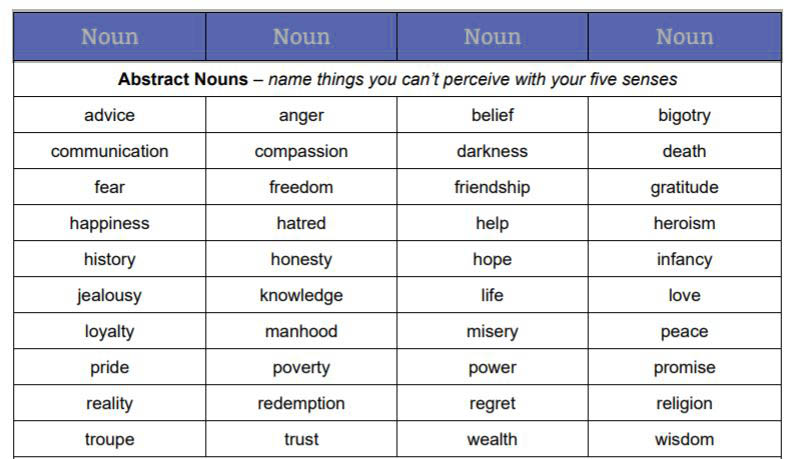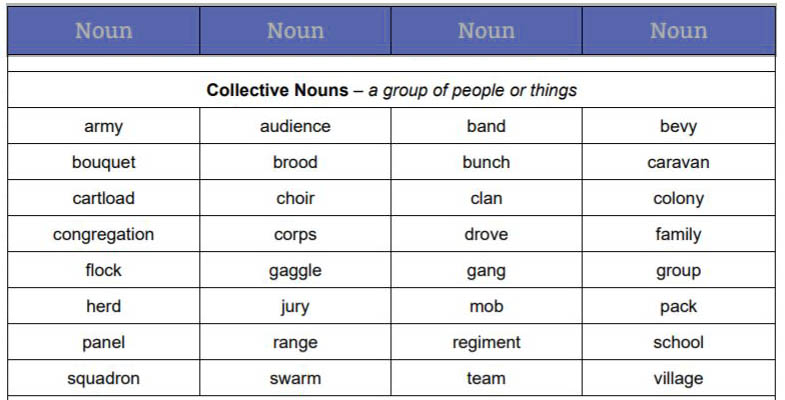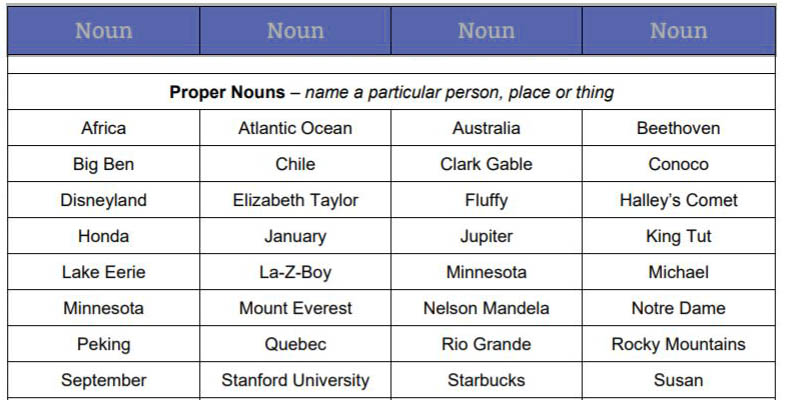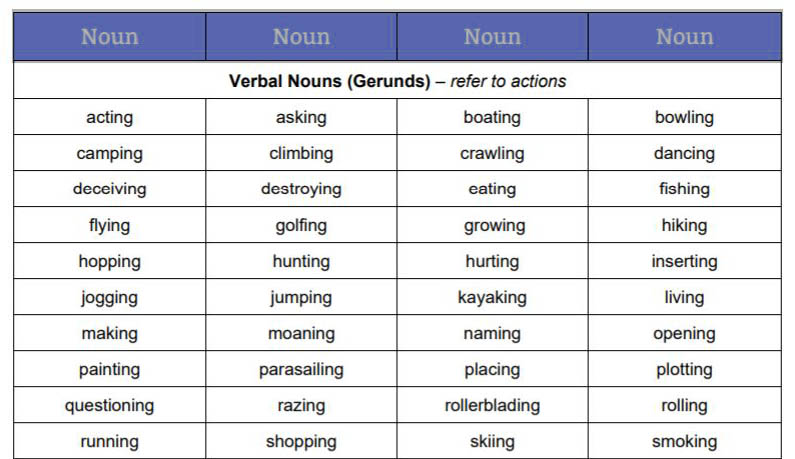The prelims examination date is not declared yet, still the exam will be held in March/April, 2018. We have now approximately two months. This is the sufficient time in which you can cover all your sections of English Language through the ‘STUDY NOTES’, we are providing you every week. In these essential pages, you will find each and every topic related to your examination, we guarantee you that you shall reach at your utmost level of English Language through the study notes. First of all, we need to understand how many topics are there to cover for clearing the prelims examination, as far as pre-exam is concerned, we are providing you some important and short notes with sufficient exercise that will surely help you build your capability of solving questions in the mock papers which lead you to the success in the examination too. Let’s have a look at the topics with the question
NOUN
- Common noun
- Proper nouns
- Abstract nouns
- Collective nouns
- Singular and plural nouns
- Subject and object nouns.
Definition of Noun: A noun is the name of any person, place, action, quality, feeling, idea, or thing. It is where we start our language journey as we learn to name the things in our world
Walking is good for my health.
The name of that activity or action is walking and in this sentence it is a noun.
Over time, you will see that a person ages, but in the process, you may come to the conclusion that ageing is a natural process of life. Here again, ageing is a noun.
If you establish that the word is naming someone or something, then you can identify it as a noun
Examples.

Concrete and abstract nouns
As you proceed along these lines, you will be introduced concepts of concrete and abstract nouns. Concrete nouns are the names of people, places and things that you can see, hear, touch, quantify or measure in some way. This applies to the fi rst fi ve examples of the names of people given earlier— Teacher, Mr Sharma, Neighbour, Child, Kapil

AND Those of places: Town, School, Shop, Australia, Room. It is when we get into the names of qualities, feelings and ideas that we get into the area of abstract nouns, and sometimes these may be more diffi cult concepts for children to grasp. One way of explaining; it is to suggest that a concrete noun is anything that you can trip over in the corridor, and that it is not possible to trip over an abstract noun. This idea helps them to understand that one may trip over a murderer, a walker, a writer, a turner, or an aged person, but not over murder, walking, writing, turn, ageing. By the same token, one may trip over a hated, loved, feared, insecure or confi dent person but one cannot trip over hatred, love, fear, insecurity, or confi dence. One may trip over a communist, a capitalist, a Buddhist, an Anglican or a philosopher in the corridor, but not (at least, not literally) over communism, capitalism, Buddhism, Anglicanism, or philosophy. Again, using a sentence to show how the word functions as a noun will work. When you give examples of each of these, you will find that you are drawing on your semantic (meaning) and syntactic (structure) knowledge of the language to confirm what you suggest. If you use the word in a sentence, you will see whether it makes sense or not. That is a good guide to the way a word functions in a sentence to create the meaning that is intended. Try this with the activities given below.
Common and proper nouns
Common nouns are general terms naming every day, common-or-garden variety things and start with a lower case letter: teacher, school, student, town/city, friend. Proper nouns are individual terms naming unique individuals and start with an upper case letter:

Whether you apply the concept of upper and lower case letters for proper and common nouns or not will have no real bearing on the function of the word, but it will make the meaning more precise in their writing. Starting proper nouns with a capital letter and common nouns with a lower case letter is really part of spelling conventions, not necessarily a grammatical consideration, but you ought to know it as part of producing their own polished pieces of writing. On this point, we do not usually call our parents, grandparents, aunts and uncles by their names.
Plural nouns
(A) Most nouns take their plural forms by adding ‘s’ : hat, parent, umbrella, day, TV Become hats, parents, umbrellas, days, TVs, 1980s.
(B) Nouns ending in ‘s, x, z, ch, sh’ add ‘es’: princess, box, waltz, watch, marsh Become princesses, boxes, waltzes, watches, marshes.
(C) Nouns ending in ‘f’ or ‘fe’ change the ‘f’ into ‘v’ and add ‘es’: wife, thief, dwarf
Become wives, thieves, dwarves (not dwarfs, as the Disney fi lm Snow White and the Seven Dwarfs suggests. Again there is a reason: dwarfs is a verb [as in a tall person who dwarfs another). The plurals of hoof and roof used always to be given as ‘hooves and rooves’, but we do accept ‘hoofs and roofs’ nowadays
(D) Nouns ending in a consonant and a ‘y’ immediately following a consonant change they into ‘i’ and add ‘es’: diary, story, baby, lady become diaries, stories, babies, ladies .
(E) Nouns ending in a vowel and a y just add ‘s’ (see fi rst rule): valley, Monday become valleys, Mondays. Note: none of this applies to surnames. We always simply add ‘s’ to surnames that end in ‘y’ :
Kennedy Kennedys
Kelly Kellys
Hendry Hendrys
(F) For nouns ending in ‘o’ there is really only a rule of thumb: if the word is English, add ‘es’ ; if it is foreign, add ‘s’ :
(G) Some nouns have irregular plurals: (wo) man , fungus , goose , deer have rather idiosyncratic plural forms, so that they become ( wo ) men , fungi , geese , deer.
(H) Collective nouns are things grouped to help to give particular meaning— a herd of sheep, a school of fish, a class of children —or to add meaning in the choice of word to describe the group: A murder of crows ; A gaggle of geese ; A business of ferrets . Note: the group is a number of items, but the collective term for them is singular. You may have a range of issues , for example, which means that the verb you will use with this expression will also be singular:
A range of issues is to be raised (not are);
The next wave of athletes is coming (not are).
(I) Uncountable nouns are always singular when taken as a grouping:
Hair (but strands of hair)
Furniture (but tables , chairs , beds )
Luggage (but bags , cases )
(1) A noun is the name of something and a proper noun has a capital letter; Karan.
(2) If the noun ends in ‘s’, add ‘es’ : Buses.
(3) Under no circumstances is an apostrophe used to indicate a plural noun; it is ‘Buses’ with no apostrophe. That is simple, isn’t it? If you try to do it any other way, you are complicating things unnecessarily and being incorrect as well.
Verbal Noun
A verbal noun is a noun formed from or otherwise corresponding to a verb. Different languages have different types of verbal nouns and different ways of forming and using them. An example of a verbal noun in English is the word singing in the sentence “Singing is fun” (this is a noun formed from the verb sing). Verbal nouns may be non-finite verb forms such as infinitives or gerunds in English (or Latin) usage. They may also be “pure” verbal nouns, formed from verbs, but behaving grammatically entirely like nouns rather than verbs (not taking direct objects, for example). Such cases may also be called deverbal nouns.
the verb phrase serving as a noun phrase is underlined, and the to-infinitive itself is bolded:
To err is human, to forgive divine.
Jan likes to go fishing on Sundays.
His greatest desire was to serve his country.


